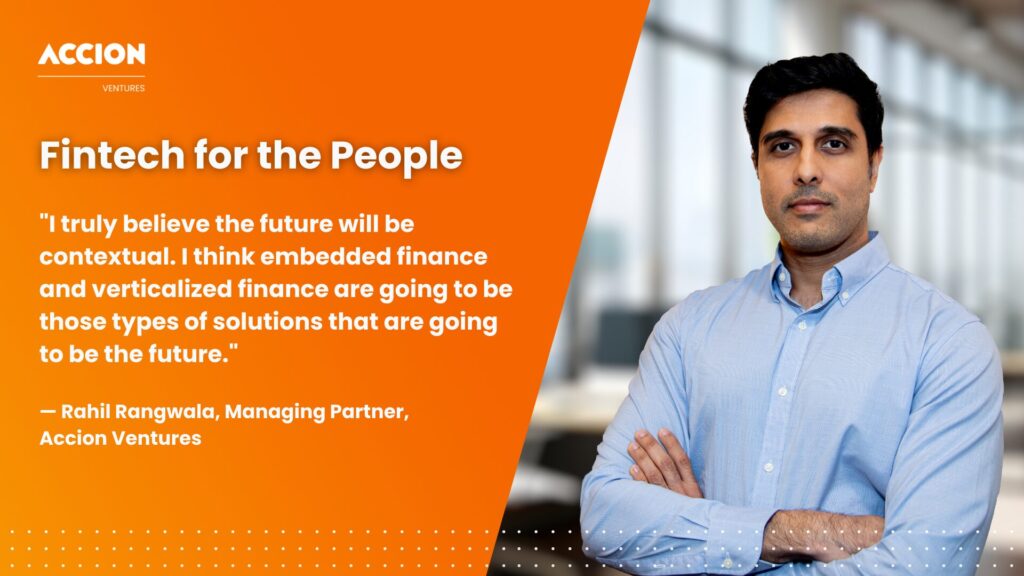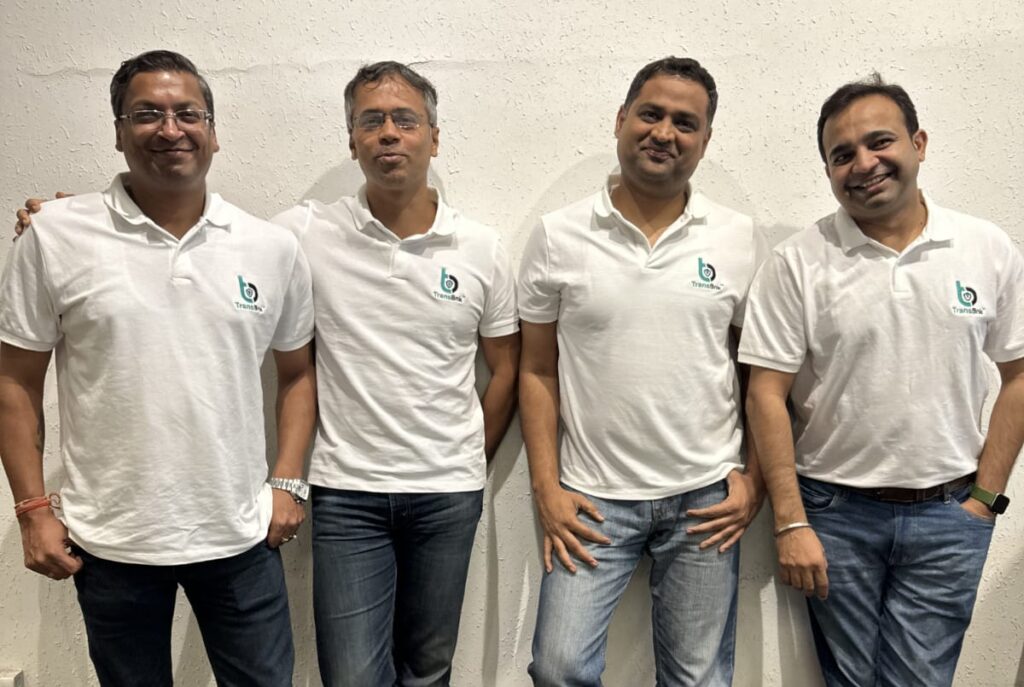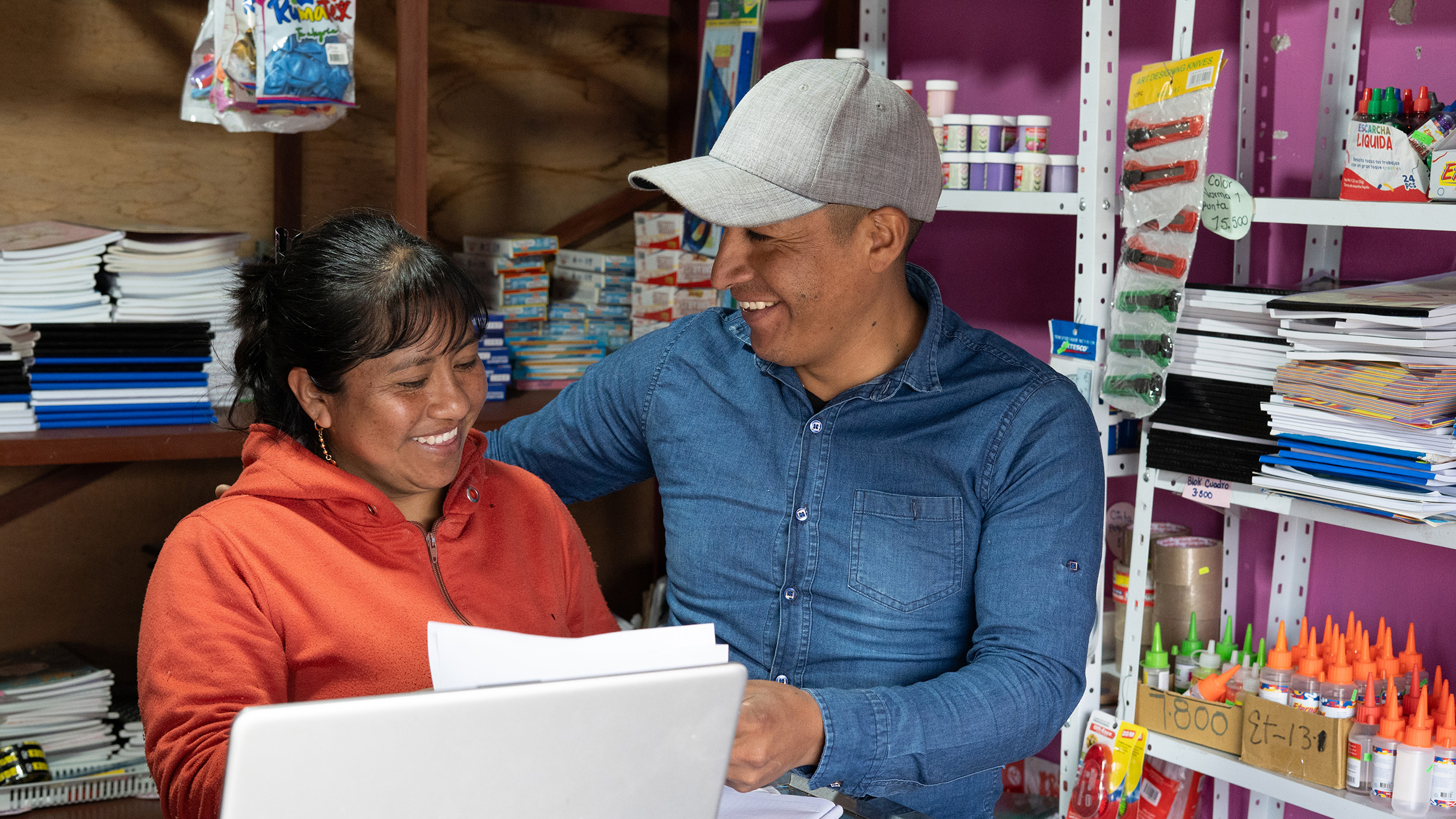Earlier this month, Quona Capital and Accion Venture Lab hosted a private webinar to explore how financial infrastructure — the systems and technology enabling modern finance — can serve as a powerful lever for financial inclusion.
Through two compelling case studies featuring Quona and Accion Venture Lab portfolio fintech founders and their clients in Brazil and India, the session highlighted how infrastructure platforms are addressing operational bottlenecks, unlocking new customer segments, and delivering measurable impact at scale. Here’s a summary of the webinar:
Why financial infrastructure?
Financial infrastructure is the behind-the-scenes digital backbone that powers modern financial services. It includes the tools, systems, and platforms that help banks, fintechs, and other players create, deliver, and manage products like savings accounts, loans, investment tools, and payment systems. You can think of it like the plumbing of the financial world — essential for making everything work smoothly and securely — from banking as a service, to compliance & risk products, to capital markets technology.
With $7B+ in global investment in compliance and risk in 2024, and embedded finance transactions expected to reach $7T in the U.S. by 2026, the market signals are clear: infrastructure is emerging as one of the most promising and scalable vehicles for delivering inclusive finance.
Why it matters for inclusion: When we talk about financial inclusion, most eyes go to products — loans, savings accounts, wallets. But the invisible enabler behind those services is infrastructure: the APIs, compliance rails, and data layers that make it even possible for financial providers to serve harder-to-reach customers in a scalable, compliant, and cost-effective way.
For financial institutions operating in emerging markets, financial infrastructure addresses fundamental pain points: high onboarding costs, limited customer data, manual reconciliation, and fragmented banking relationships. Take just one example: API-based automation platforms have been shown to reduce costs by up to 80 percent and accelerate customer processing time from days to minutes. This cost and time compression is what makes it viable for lenders and platforms to serve low-income or small-ticket customers.
Financial infrastructure doesn’t serve consumers or MSMEs directly — it creates the rails that allow others to do so, faster, cheaper, and with better context. That’s why we see infra as an inclusion multiplier: by lowering the marginal cost to serve, increasing automation, and improving decisioning, it unlocks entire customer segments previously seen as unviable.
The impact pathway is multi-layered:
- Short-term: Expands reach and access by reducing costs and operational friction.
- Medium-term: Increases product uptake and improves financial health through better delivery.
- Long-term: Generates network effects that create systemic inclusion across the broader ecosystem.
But who these infrastructure plays enable matters deeply. The scale and client mix of any infrastructure provider — whether mission-aligned lenders or legacy institutions — ultimately determines its potential to advance inclusion. And while measuring this impact is complex, it’s essential. Metrics like downstream reach, income-level segmentation, product improvements, and cost efficiencies offer a path to evaluating whether these platforms are truly moving the needle on access.
Financial infrastructure companies like TransBnk or Kanastra, featured in our July webinar, demonstrate this dual value proposition. They’re solving pain points for institutional clients while indirectly expanding access to financial services for millions of underserved consumers and MSMEs.
Reimagining capital markets infrastructure for inclusive lending in Brazil

“Everyone wants to serve the underserved, but financial inclusion is difficult for originators because the ticket size needed to reach underserved segments is too small. We still have the same fixed cost in order to serve one customer, so smaller tickets are more difficult to do affordably,” explained Sergio Furio, CEO of Quona portfolio company Creditas. “This is why good, collaborative infrastructure partners are critical—they enable you to be a low-cost producer and reach those segments.”
Creditas is one of Brazil’s leading secured lending platforms, managing over U$1 billion in AUM and generating ~$400 million in annual revenue. Its inclusive approach — offering loans backed by payroll, used cars, and homes valued as little as $30,000 — opened up affordable credit to middle-class borrowers traditionally underserved by Brazil’s financial system.
But as Creditas scaled, Brazil’s capital markets infrastructure became a bottleneck. Transactions required complex and expensive coordination across custodians, administrators, banks, and legal teams, many of whom operated on outdated systems and offered limited flexibility.
That fragmentation is what Gustavo Mapeli and Manuel Netto set out to solve with Kanastra. Before founding the company, they ran an asset manager and experienced firsthand the challenges of structuring and funding securitized credit facilities. “The incumbents… operated using Excel-like systems, and that created a myriad of operational errors,” said Mapeli. “The industry was very fragmented, so clients had to integrate different service providers themselves. And customer service levels were very, very poor.”
Kanastra’s model tackles each of these friction points:
- A tech-driven platform replaces manual processes and reduces errors
- A vertically integrated model consolidates necessary licenses and services
- A high-touch service culture ensures seamless operations for originators and investors
“We built a tech-driven experience from the front to the back of operations… with a verticalized business model and an awesome customer service level,” Mapeli summarized.
Kanastra has also invested heavily in measurement infrastructure. Quona first invested in Kanastra in 2023, and the team has since developed analytics—with Quona’s support—that allow clients and investors to track who is being reached and how many borrowers fall within target income segments. “We were able to identify very granularly every individual being funded by our originators… and we also got information around their income,” said Mapeli. “We’ve been doing that for over three years now.”
Furio emphasized Kanastra’s broader value to the ecosystem: “If you can have a player like Kanastra building the rails, obviously you’re going to be increasing financial inclusion and building sustainable businesses with significantly lower CapEx.”
Transaction infrastructure to power high-volume, low-ticket lending in India

India is home to one of the world’s largest and fastest-growing digital lending ecosystems—but scale comes with complexity. Bajaj Finserv is one of the largest non-banking financial companies (NBFCs) in the country. “We have a base of close to 100 million customers, and on a month-on-month basis, we disburse close to 4 million new loans,” said Anand Ganu, Bajaj’s National Lead for Banking Operations. These include credit for consumer durables, personal needs, gold-backed financing, and more. “We cater to everything from affluent customers buying high-end TVs to regional-language, lower-middle-class borrowers across India.”
Serving such a diverse population — especially in rural and semi-urban areas — requires infrastructure that can handle low ticket sizes, non-English-speaking users, and variable connectivity. Every rupee of added friction erodes margins.
That’s where TransBnk comes in. Founded in 2022 and an Accion Venture Lab portfolio company, TransBnk provides a consolidated API platform that enables financial institutions to streamline onboarding, validate accounts, orchestrate transactions across 30+ banks, and manage repayments at scale.
A major shift for Bajaj came through TransBnk’s integration of UPI AutoPay, India’s real-time recurring payments infrastructure. Previously, mandate registration for EMI collection was manual and costly. “In 2019, 60 percent of mandates were still physical,” Ganu noted. “With Transbnk, we moved to 95 percent digital. That significantly reduced our collection costs and improved customer satisfaction.”
Real-time, same-day collections replaced two-day advance debits, reducing friction for borrowers and cutting complaints. When asked why Bajaj worked with an external partner, Ganu was direct: “We are a lender first. We understand the value of working with agile fintech partners whose core business is solving for complexity like this.”
“Banks weren’t able to scale to 1,000 transactions per second,” added Vaibhav Tambe, Co-Founder & CEO of TransBnk. “We built a layer on top — handling traffic, orchestrating across banks, and managing regulatory changes so clients don’t have to.”
TransBnk has even enabled biometric onboarding in rural areas, creating reusable solutions that can serve multiple clients efficiently. With over 15 million transactions now processed monthly for Bajaj Finance, TransBnk is proving how purpose-built infrastructure can drive both operational scale and financial inclusion.
While financial infrastructure remains a nascent and rapidly evolving sector, we’re encouraged by the growing body of evidence that these platforms can meaningfully expand access to underserved segments. The indirect nature of these models makes impact measurement more complex—but also enables scale in ways that direct-to-consumer models often cannot.
At Quona and Accion Venture Lab, we’re excited to continue exploring this space and look forward to sharing more insights as the infrastructure for inclusion continues to take shape.









